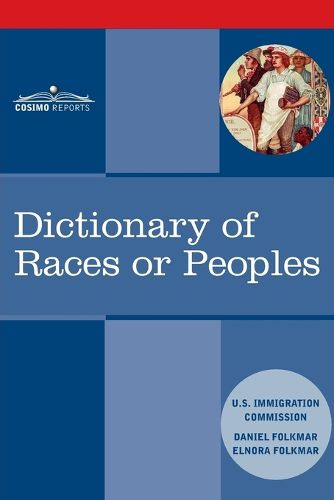Readings Newsletter
Become a Readings Member to make your shopping experience even easier.
Sign in or sign up for free!
You’re not far away from qualifying for FREE standard shipping within Australia
You’ve qualified for FREE standard shipping within Australia
The cart is loading…






This title is printed to order. This book may have been self-published. If so, we cannot guarantee the quality of the content. In the main most books will have gone through the editing process however some may not. We therefore suggest that you be aware of this before ordering this book. If in doubt check either the author or publisher’s details as we are unable to accept any returns unless they are faulty. Please contact us if you have any questions.
For the first time, the government tries to find out, not what nations but what races are pouring into America, and It reaches some conclusions that will make the average man stare. –from The races that go into the American melting pot, New York Times, May 21, 1911
In the early 1900s, US immigration changed dramatically. Not only did the annual immigration levels soar to over one million a year, resulting in an immigrant population of 10 million, but the origin of immigrants was changing greatly as well. In the 1880s, 87 percent of the immigrants came from northern and western Europe, while by the early 1900s, 81 percent came from southern and eastern Europe. From 1899 on, immigrants were no longer classified by country of birth, but according to race or people. This was due to the many new immigrants, from the Austro-Hungarian or Russian empires, who could not easily be distinguished by country of birth.
In 1907, the US IMMIGRATION COMMISSION (a.k.a. the Dillingham Commission), a joint House and Senate commission, was formed to study these changes in immigration. The commission’s chairman, the Republican Senator William P. Dillingham (1843-1923) and a Progressive reformer, was a vocal advocate of restriction of immigration. As part of its 41-volume report on immigration, the commission released the Dictionary of Races and Peoples in 1911. It was written by the commission’s senior researcher Daniel Folkmar with his wife Elnora, and became a crucial source of anthropological, cultural, historical, and geographical information about the many races entering the US. Although it consisted of many cultural stereotypes, it was initially well received and only from the early 1950s on did it receive widespread criticism.
The Dictionary of Races and Peoples and the commission’s overall findings, including that the new immigration formed a serious threat to American society and should be greatly reduced, were later used in 1920s legislation reducing immigration.
Students of immigration, academics, journalists, and anyone interested in the history of US immigration and solutions for 21st century America will find this controversial dictionary a vital background reading.
$9.00 standard shipping within Australia
FREE standard shipping within Australia for orders over $100.00
Express & International shipping calculated at checkout
This title is printed to order. This book may have been self-published. If so, we cannot guarantee the quality of the content. In the main most books will have gone through the editing process however some may not. We therefore suggest that you be aware of this before ordering this book. If in doubt check either the author or publisher’s details as we are unable to accept any returns unless they are faulty. Please contact us if you have any questions.
For the first time, the government tries to find out, not what nations but what races are pouring into America, and It reaches some conclusions that will make the average man stare. –from The races that go into the American melting pot, New York Times, May 21, 1911
In the early 1900s, US immigration changed dramatically. Not only did the annual immigration levels soar to over one million a year, resulting in an immigrant population of 10 million, but the origin of immigrants was changing greatly as well. In the 1880s, 87 percent of the immigrants came from northern and western Europe, while by the early 1900s, 81 percent came from southern and eastern Europe. From 1899 on, immigrants were no longer classified by country of birth, but according to race or people. This was due to the many new immigrants, from the Austro-Hungarian or Russian empires, who could not easily be distinguished by country of birth.
In 1907, the US IMMIGRATION COMMISSION (a.k.a. the Dillingham Commission), a joint House and Senate commission, was formed to study these changes in immigration. The commission’s chairman, the Republican Senator William P. Dillingham (1843-1923) and a Progressive reformer, was a vocal advocate of restriction of immigration. As part of its 41-volume report on immigration, the commission released the Dictionary of Races and Peoples in 1911. It was written by the commission’s senior researcher Daniel Folkmar with his wife Elnora, and became a crucial source of anthropological, cultural, historical, and geographical information about the many races entering the US. Although it consisted of many cultural stereotypes, it was initially well received and only from the early 1950s on did it receive widespread criticism.
The Dictionary of Races and Peoples and the commission’s overall findings, including that the new immigration formed a serious threat to American society and should be greatly reduced, were later used in 1920s legislation reducing immigration.
Students of immigration, academics, journalists, and anyone interested in the history of US immigration and solutions for 21st century America will find this controversial dictionary a vital background reading.